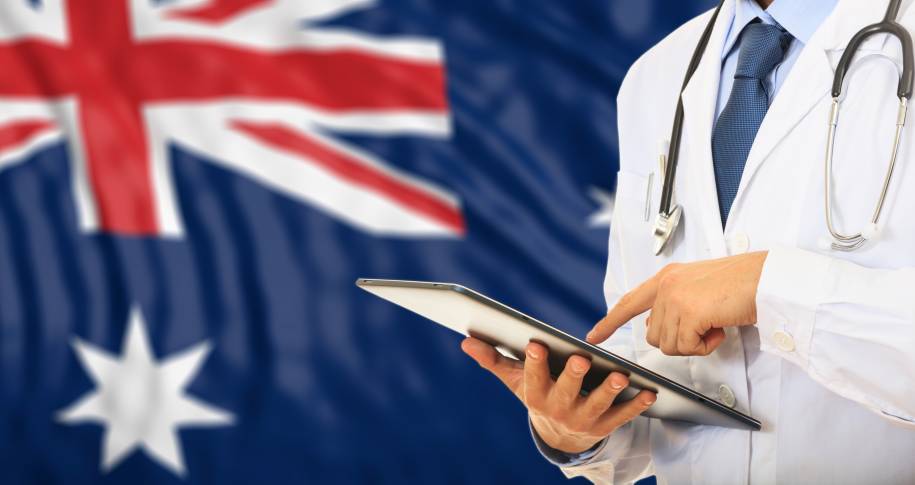Were you wondering about the details and nuances of Australian and Canadian healthcare systems? The team of Canadian Health&Care Mall decided to compare the public healthcare systems of two great countries.
Peculiar features of Canadian healthcare system
Canadian healthcare is a niche that causes the most outrage among local residents and, at the same time, is the pride of the whole state.
 In fact, there is something to be proud of. Medical care, contrary to popular belief, is paid in Canada. However, thanks to an established system of free public insurance, residents of the country do not pay anything for medical services. All expenses (or almost all) are paid off by the state. However, it is a notorious misconception that healthcare in Canada is totally free.
In fact, there is something to be proud of. Medical care, contrary to popular belief, is paid in Canada. However, thanks to an established system of free public insurance, residents of the country do not pay anything for medical services. All expenses (or almost all) are paid off by the state. However, it is a notorious misconception that healthcare in Canada is totally free.
At first, free healthcare in Canada is available not for everyone, but only for citizens and immigrants, in some provinces and for those who work under a contract. But tourists and guests of the country must fully pay for all medical services if they have not taken care of their own insurance plans before visiting Canada. By the way, this also applies to refugees who can receive a free medical care in Canada only in emergency cases.
To avoid any problems with Canadian medical care, you should first understand all the details and nuances of the local healthcare system. By the way, the terms and conditions of health insurance and care in each province may differ and what applies to Ontario can be illegal in Quebec.
The first recommendation for all guests or residents in Canada – take care of your Health Card. In some provinces, you can provide the documents necessary for receiving this card after a certain time of permanent residence in the area. In Quebec, a personal health insurance card is received immediately upon arrival, but it comes into effect only after 3 months. This card, like a passport and driver’s license, works as an identity card as well.
Thanks to public insurance plans, the majority of Canadian residents do not pay for visiting a doctor, expert advice, diagnostics, tests, any costs of hospitalization, surgery, anything related to pregnancy and childbirth. But free insurance is not covered by the services of a dentist, most of the services of an ophthalmologist and some other specialists (for example, massage therapists) are not paid over by governmental services, only by cosmetologists and plastic surgeons. Also, you will not be receive free medicines at any local pharmacy, except online drugstores, if you need them for such reasons. The same is referred to the use of ambulance services and emergency calls.
Another feature of the local health care system is that all medicine relies on family doctors. Without their consultations nothing happens: a first doctor who examines a patient then conducts diagnostic tests and prescribes necessary medications. Only a family doctor can recommend visiting other specialists, if he or she considers this consultation necessary enough.
Peculiar features of Australian healthcare system
The entire healthcare system in Australia is divided into 2 components: public service and private medical care. Such strict division allows you to choose the most suitable option in each case, including combining one with the other.
 Since the healthcare system is based on insurance plans, medical institutions are paid for their services, and, consequently, they have a tangible incentive to monitor the quality and level of medical services provided.
Since the healthcare system is based on insurance plans, medical institutions are paid for their services, and, consequently, they have a tangible incentive to monitor the quality and level of medical services provided.
Every citizen, including permanent residents of Australia, is taxed by 1.5% of income – used to pay for medical services. This insurance is called Medicare and it covers almost all hospital treatment issues.
It includes the following list of services:
- visiting a doctor (within the limits of the existing established standards);
- visits to ophthalmologists;
- provision of primary and follow-up care in public hospitals;
- medical tests and X-rays;
The most important thing is to go to a general practitioner. In Australia, he or she is called the General Practitioner (briefly GP) and has the functions of a family doctor.
Medicare gives an access not only to public hospitals, but also for the treatment with private doctors, although the difference in price will have to be paid extra. In addition, Medicare as a governmental system along with the Pharmaceutical Benefits Scheme covers the costs of not all, but most of the prescription medications available in Australian pharmacies.
If you are being treated outside the hospital – at a private doctor – at a higher rate, then Medicare will refund you 85% of the official price (Schedule of fees), you pay the 15% difference yourself.
The public healthcare system also covers all treatment bills less than 52.50 AUD. If the price for treatment is lower than 85% of the official one, the bill is equal to the price of this service.
The healthcare system in Australia is divided into several categories:
- General practitioners;
- Doctors specializing in a specific profiles and diseases;
- Emergency or first aid teams;
- Public and private hospitals;
- Public health centers;
A serious problem in Australia is the need to wait for a long-term hospitalization of planned (not emergency) patients. Such patients are queued and registered in a special account form, the so-called waiting list.
The average waiting time for hospitalization in the surgical departments of public hospitals is 32 days. Depending on the nature of an upcoming surgery, it ranges from 10-12 (cardiac surgery) to 70-80 in a case of ophthalmologic surgeries.
There are cases when the patient has to wait for hospitalization even longer. The number of such patients with a surgical profile in recent years has reached 2.8–3.2% (of the number recorded by waiting lists). Nevertheless, recently there has been a tendency to reduce the waiting time in this list.
Also keep in mind that not all medical costs are covered by Australian Medicare.
For example, the government will not cover the following medical services for you:
- Visits and accommodation in private hospitals;
- Dentist’s services;
- Ambulance and emergency services;
- Home nursing services;
- Physiotherapy;
- Correction of speech defects;
- Ophthalmologic services;
- Manual therapy;
- Homeopathy and acupuncture treatment (including consultations);
- Price of ear-improving devices;
- Price of prostheses;
- Price of OTC drugs;
- treatment and hospitalization;
- Plastic surgery for cosmetic purposes;
- Tests for receiving an insurance plan, retirement or membership in disabled societies;
The summary is very simple – Canadian and Australian healthcare systems are alike, have the similarities like partially paid health bills by local government authorities and the system of public insurance funds. They also share the same problems like waiting for a long time in hospitals. However, there are also differences like the Medicare coverage of certain hospital and medical privileges.



